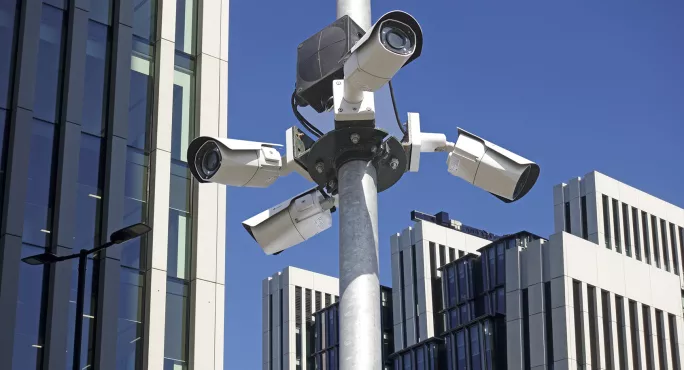Why schools must act on new filtering and monitoring standards

The internet has revolutionised education, bringing with it the full spectrum of content that can be both awe-inspiring and overwhelming.
A 10-year-old once described the internet to me as “a book that never ends”. But while we can marvel at the wonders of infinite information, the freedom it can provide in terms of content and contact with others also carries equal and opposite threats.
Recognising this, schools and colleges have used filtering systems ever since they first connected to the internet more than 20 years ago.
From our own evidence (from the 16,500 schools using 360 Degree Safe since 2009), we have seen that schools and colleges typically consider their filtering and monitoring provisions as their strongest online safety provision. This is encouraging.
Statutory obligations and UK Safer Internet Centre definitions
Ever since 2015, schools in England and Wales have been required “to ensure children are safe from terrorist and extremist material when accessing the internet in school, including by establishing appropriate levels of filtering”.
The Department for Education went on to include, within the statutory guidance Keeping Children Safe in Education, the expectation of schools and colleges in England to “ensure appropriate filters and appropriate monitoring systems are in place (then in 2022 appended) and regularly review their effectiveness” and they “should be doing all that they reasonably can to limit children’s exposure to the above risks from the school’s or college’s IT system”.
In 2016, to support these obligations, the UK Safer Internet Centre developed and published its definitions of appropriate filtering and monitoring.
These help all education settings (including early years, schools and further education settings) as well as filtering providers comprehend what should be considered as “appropriate filtering and monitoring” in their particular circumstances.
As technology and harms evolve, these definitions have been reviewed annually to ensure their relevance.
Recognising the gaps
Although the statutory obligations and our definitions have been established for a number of years now, we also recognise the limitations of filtering and monitoring, specifically that no filtering system can be 100 per cent effective and needs to be supported with good teaching and learning practice and effective supervision.
Many of us have seen the tragic story of Frankie Thomas, who very sadly took her own life after witnessing suicidal material on a school iPad. The coroner concluded that there were a number of failings, which included that the filtering system was inactive on Frankie’s devices.
Frankie’s parents, Judy and Andy, have campaigned tirelessly to highlight the issue and we pay tribute to their courage and dignity.
Frankie acts as a reminder for us all about the essential need for every school and college to have an effective strategy, implementation and ongoing management around filtering and monitoring procedures.
New guidance
We very much welcome the new DfE filtering and monitoring standards, which will be referenced in the education secretary’s BETT speech this year, and encourage all schools and colleges to use these to review their filtering and monitoring strategy and provision.
To help in this activity, since 2016, the UK Safer Internet Centre has published self-certified responses from most of the leading providers indicating how their systems perform.
Reviewing filtering and monitoring can appear complex. However, the new standards provide navigation - in addition to reinforcing aspects of both filtering and monitoring systems - that elaborate on new aspects, specifically:
Responsibilities
As a first action, you should ask yourself: “Who is responsible for filtering and monitoring?”
As we are dealing with technology and issued devices, you may be inclined to believe that IT teams and technical support staff should manage filtering and monitoring protocols. However, while their support is necessary, it is the duty of the safeguarding team to manage an effective strategy from the start.
Assessing the risks
When deciding on how to effectively implement filtering and monitoring procedures, schools should think about what appropriate solutions would be the most beneficial for their communities.
In this instance, it is good practice to carry out a risk assessment and identify whether the current system is actually appropriate.
As part of this, consider what content children are being exposed to and whether any student groups (ie, vulnerable children) need further safeguards.
We see many filtering and monitoring systems chosen based purely on cost rather than addressing specific community needs.
Check and document
From the findings that were raised in Frankie Thomas’ inquest, it is imperative for schools to regularly (at least annually) check that their systems are actively working as you would expect them to.
This includes testing across all devices to ensure that harmful online content is appropriately filtered, not purely for laptops, but for mobile devices as well.
It needs to be stressed that filtering and monitoring often work differently on mobile devices compared with other school devices and, as such, must be regularly checked and audited for robustness, to help inform your wider safeguarding strategy.
It is important to maintain a log that documents your checks as well. If you need any support with safely checking the fundamental operation of your filter, you can test your school’s internet at testfiltering.com.
Continual review
As we have seen through our own online safety self-review tool (360Safe), filtering and monitoring practice in schools has improved throughout the last 12 years.
It is encouraging to see this area of safeguarding remain a notable strength within the UK’s education field. But as schools continue to evolve alongside technology, it is essential these standards are upheld and intact.
For more information on filtering and monitoring, you can access information at the UK Safer Internet Centre.
David Wright is CEO of Southwest Grid for Learning (SWGfL)
Register with Tes and you can read two free articles every month plus you'll have access to our range of award-winning newsletters.
topics in this article



